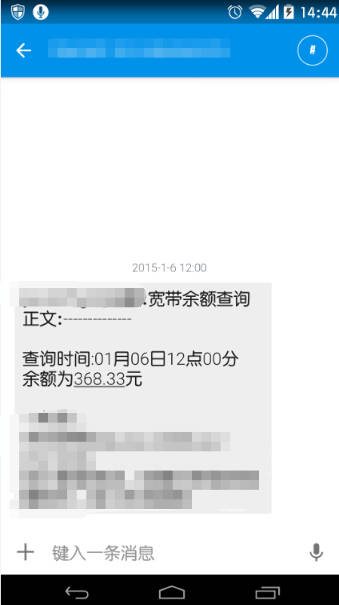使用supervisor托管shadowsocks
由于shadowsocks在服务器运行可能会不稳定,所以我们将shadowsocks的运行管理任务交给supervisor,这样如果ss挂了,supervisor会帮我们自动将shadowsocks重新启动,保证了ss的稳定性。
supervisor是什么我就不多介绍了,老高在此只强调一点,他是由python编写的,官网在此 http://supervisord.org/
本文也可作为supervisor的入门文章使用,欢迎大家交流!
由于shadowsocks在服务器运行可能会不稳定,所以我们将shadowsocks的运行管理任务交给supervisor,这样如果ss挂了,supervisor会帮我们自动将shadowsocks重新启动,保证了ss的稳定性。
supervisor是什么我就不多介绍了,老高在此只强调一点,他是由python编写的,官网在此 http://supervisord.org/
本文也可作为supervisor的入门文章使用,欢迎大家交流!
上回老高写了翻墙篇,寻思着这openwrt下能不能跑个python,继续折腾!
参照着php版的接口写的
目前测试使用没问题,预留了保存cookie和token的功能,可以减少几次请求,以后慢慢加吧!
目前给自己发通知还是妥妥的。
调试程序的时候,如果需要打印出变量的信息,在python中很容易,一句print即可,他几乎可以打印任何类型的对象,不像PHP中,有一堆echo(),print(),print_r(),var_dump(),让人头疼!
但是PHP的打印函数有个好处,就是打印格式良好,而Python的打印信息就不是很友好了,如
# 模拟一个很大的键值对
dic = {}
for i in xrange(201):
dic[i] = "value for %d" % i
print dic
其结果我就不打印了,总之很难看!
如何让python那冗长而且没有格式的打印变得更直观,方法有两种。
此方法来自stackoverflow
# 以后需要有格式的打印一个集合对象,直接使用dump(xxx)即可!
# 不要忘了import sys
import sys
def dump(obj, nested_level=0, output=sys.stdout):
spacing = ' '
if type(obj) == dict:
print >> output, '%s{' % ((nested_level) * spacing)
for k, v in obj.items():
if hasattr(v, '__iter__'):
print >> output, '%s%s:' % ((nested_level + 1) * spacing, k)
dump(v, nested_level + 1, output)
else:
print >> output, '%s%s: %s' % ((nested_level + 1) * spacing, k, v)
print >> output, '%s}' % (nested_level * spacing)
elif type(obj) == list:
print >> output, '%s[' % ((nested_level) * spacing)
for v in obj:
if hasattr(v, '__iter__'):
dump(v, nested_level + 1, output)
else:
print >> output, '%s%s' % ((nested_level + 1) * spacing, v)
print >> output, '%s]' % ((nested_level) * spacing)
else:
print >> output, '%s%s' % (nested_level * spacing, obj)
此方法来自官方,可以自定义缩进,宽度等信息。
import pprint
dic = {}
for i in xrange(201):
dic[i] = "value for %d" % i
# 自定义缩进为4空格
pp = pprint.PrettyPrinter(indent=4)
pp.pprint(dic)
老高推荐官方的pprint,自定义格式很不错!
完
Reference:
http://stackoverflow.com/questions/15785719/how-to-print-a-dictionary-line-by-line-in-python https://docs.python.org/2/library/pprint.html
家里的宽带是包年按天扣费,时间长了就忘了改什么时候续费了。
抽时间写了个模拟登录10010.com的脚本,自动查询余额。
每天中午12点查一次,省得下次又欠费了。
模拟登录的过程很简单,获取查询的cookie需要两步请求,拿到cookie后可以随意查询。
有TX想看源码么?

已贴源码
#!/usr/bin/env python
# encoding: utf-8
"""
@version: 0.2
@author: phpergao
@license: Apache Licence
@contact: [email protected]
@site: http://www.phpgao.com
@software: PyCharm
@file: 10010.py
@time: 15-1-3 下午6:06
一键查询联通宽带余额
"""
import urllib2
import cookielib
import json
class Crawl():
def __init__(self, username, passwd, debug=False):
(self.username, self.passwd) = (username, passwd)
self.cookie = cookielib.CookieJar()
cookieHandler = urllib2.HTTPCookieProcessor(self.cookie)
self.is_debug = debug
if self.is_debug:
httpHandler = urllib2.HTTPHandler(debuglevel=1)
httpsHandler = urllib2.HTTPSHandler(debuglevel=1)
opener = urllib2.build_opener(cookieHandler, httpHandler, httpsHandler)
else:
opener = urllib2.build_opener(cookieHandler)
urllib2.install_opener(opener)
self.last_url = ''
def get_html(self, url, postdata=''):
print "Requesting for %s" % url
if postdata != '':
req = urllib2.Request(url, postdata)
else:
req = urllib2.Request(url)
req.add_header('User-Agent', 'Mozilla/5.0 (Ubuntu; X11; Linux i686; rv:8.0) Gecko/20100101 Firefox/8.0')
req.add_header('Content-Type', 'application/x-www-form-urlencoded')
req.add_header('Cache-Control', 'no-cache')
req.add_header('Accept', '*/*')
req.add_header('Connection', 'Keep-Alive')
try:
resp = urllib2.urlopen(req)
except Exception as e:
print e
self.last_url = url
if self.is_debug:
print "method: %s" % req.get_method()
crawl.tell_cookie()
return resp
def tell_cookie(self):
for item in self.cookie:
print "cookie name : %s ---- value: %s" % (item.name, item.value)
def get_balance(self):
# 首页
url_home = "http://www.10010.com/"
# 登录主页
url_login = "https://uac.10010.com/portal/mallLogin.jsp?redirectURL=http://www.10010.com"
# 登录框架页
url_frame = "https://uac.10010.com/portal/homeLogin"
# 登录地址
# 这里需要观察一下chrome的发送信息,需要自己改的有areaCode和arrcity
# 就是登录时候选择的信息
# 说是post,其实只是明文GET 囧
# 无力吐槽
url_post = "https://uac.10010.com/portal/Service/MallLogin?callback=jQuery172006519943638704717_" \
"1420279331097&redirectURL=http%3A%2F%2Fwww.10010.com&userName=" + str(self.username) + "&password=" \
+ str(self.passwd) + "&pwdType=01&productType=04&redirectType=01&rememberMe=1&areaCode=841" \
"&arrcity=%E8%A5%BF%E5%AE%89"
# 点击查询按钮链接
cookie1 = "http://iservice.10010.com/ehallService/static/login/r?menuid=000100010013"
# 点击后获取到key为e3的cookie,参数可能会变
cookie2 = "http://iservice.10010.com/e3/static/check/checklogin/?_=1420301171070"
# 查询余额页面
url_balance = "http://iservice.10010.com/e3/query/account_balance.html"
# 查询余额接口
url_last = "http://iservice.10010.com/e3/static/query/accountBalance/search?"
# self.get_html(url_home)
# self.get_html(url_login)
self.get_html(url_frame)
self.get_html(url_post)
self.get_html(url_home)
self.get_html(cookie1)
# a=1意思是将请求方法变为POST
self.get_html(cookie2, "a=1")
self.get_html(url_balance)
return self.get_html(url_last, "a=1")
if __name__ == '__main__':
crawl = Crawl(xxxxx, xxxxx)
info = crawl.get_balance()
data = json.load(info)
print data['realtimebalance']
数据拿到了剩下的问题就是如果发送到手机了,老高前几天写了个飞信发送短信脚本,中国移动的用户有福了。
python在用命令行的时候能够接受很多参数,到底是如何接受那些参数和选项呢?
import sys, getopt
opts, args = getopt.getopt(sys.argv[1:], "hi:o:")
input_file=""
output_file=""
for op, value in opts:
if op == "-i":
input_file = value
elif op == "-o":
output_file = value
elif op == "-h":
usage()
sys.exit()